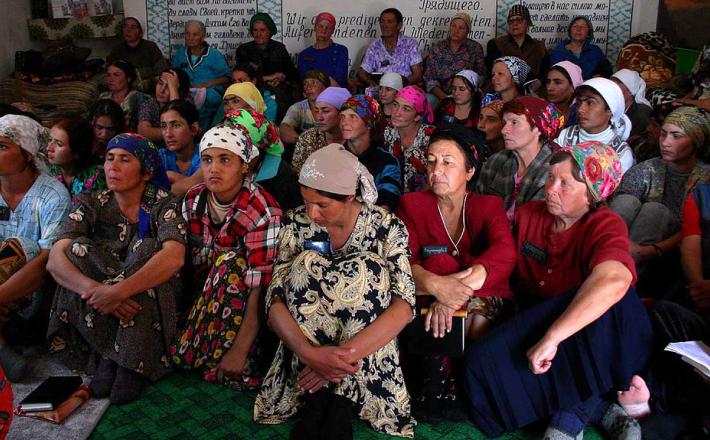Inside the wardrobe: Women’s clothing increasingly policed in Tajikistan
Source: Global Voices
Many women in Tajikistan are subject to all-encompassing control over nearly every aspect of their daily lives: from husbands, family members, and the state. This trend was intensified when President Emomali Rahmon on June 21, 2024 signed a law effectively banning clothing perceived as “inconsistent” with Tajik national culture.
State regulation of women’s clothing
The campaign to restrict what women may wear in public began in 2007 in Tajikistan, when wearing the hijab was banned in schools, and from 2009 in public institutions. In 2015, the Tajik authorities reportedly held meetings with schools and women's clothing sellers to educate them about the importance of the Tajik national dress.
In 2017, the authorities cracked down on shops selling dolls dressed in hijabs or other types of Islamic dress. Rahmon, who has served as president since 1994, also ordered a special commission to identify a more “appropriate” dress code for citizens.
In September 2017, people in Tajikistan received text messages from the government reminding them to wear national costumes at “traditional gatherings,” enforcing a law from August 2017 requiring citizens to wear national dress at events such as weddings and funerals.
In 2018, the ministry of culture went further and published a 367-page book titled “The Guidebook To Recommended Outfits In Tajikistan” aimed at girls and women from age seven. It included recommendations on sleeve lengths, skirt lengths, fabrics, and recommendations for shoes: heels are a must. Although the book was not written into law, it sent a strong message to the women of Tajikistan. What they wear is not their own choice.
Read here the full article published by Global Voices on 6 October 2024.
Image by Global Voices

Many women in Tajikistan are subject to all-encompassing control over nearly every aspect of their daily lives: from husbands, family members, and the state. This trend was intensified when President Emomali Rahmon on June 21, 2024 signed a law effectively banning clothing perceived as “inconsistent” with Tajik national culture.
State regulation of women’s clothing
The campaign to restrict what women may wear in public began in 2007 in Tajikistan, when wearing the hijab was banned in schools, and from 2009 in public institutions. In 2015, the Tajik authorities reportedly held meetings with schools and women's clothing sellers to educate them about the importance of the Tajik national dress.
In 2017, the authorities cracked down on shops selling dolls dressed in hijabs or other types of Islamic dress. Rahmon, who has served as president since 1994, also ordered a special commission to identify a more “appropriate” dress code for citizens.
In September 2017, people in Tajikistan received text messages from the government reminding them to wear national costumes at “traditional gatherings,” enforcing a law from August 2017 requiring citizens to wear national dress at events such as weddings and funerals.
In 2018, the ministry of culture went further and published a 367-page book titled “The Guidebook To Recommended Outfits In Tajikistan” aimed at girls and women from age seven. It included recommendations on sleeve lengths, skirt lengths, fabrics, and recommendations for shoes: heels are a must. Although the book was not written into law, it sent a strong message to the women of Tajikistan. What they wear is not their own choice.
Read here the full article published by Global Voices on 6 October 2024.
Image by Global Voices